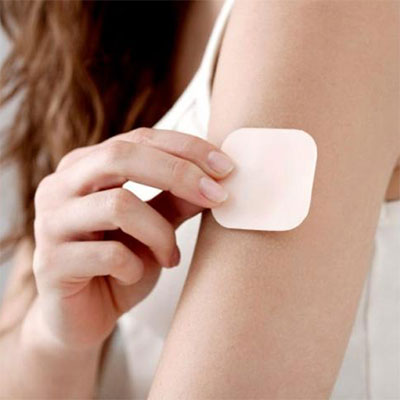Pharmaceutical Delivery Systems
Dermal Delivery

Topical Delivery
Topical and transdermal drug administration have been used in medicine over centuries and a wide range of therapeutic agents have been experimented with. From the early days of medicine, the skin - our largest organ - has been treated with plant and herbal extracts. However, skin anatomy and physicochemical properties of modern drug molecules are often obstacles to transport via this route. When topical creams, gels and lotions are applied to the stratum corneum they remain mainly on the surface of the skin until washed or rubbed off.
Phospholipids with a Phosphatidyl Choline content of around 75 % have been used as pharmaceutical emulsifiers and co-emulsifiers for a long time. On the skin surface they form lamellar layers or micelles, protecting the active ingredients and allowing them to adhere longer to the skin. And - compared to many other emulsifiers – natural Phospholipids are non-irritant due to their biomimetic structure.
An important function of Phospholipids in topical formulations is the protection of APIs against degradation. It could be demonstrated that e.g. Retinol (a form of Vitamin A) was much longer stable when a cream formulation contained Phospholipids in a 1:1 ratio to Retinol.
Skin penetration vs. skin permeation

However, many APIs will only penetrate through the stratum corneum into the epidermis and do not permeate into lower skin layers or the tissue underneath the skin.

Transdermal Delivery
The most interesting and little known function of Phospholipids is their ability to deliver APIs via the transdermal route. For allowing such transdermal function, particle size must be adjusted and surface characteristics of APIs improved. Nano-emulsion or liposomes made with Phospholipids open this route of application. The term “transfersomes” refers to liposomes formed by phospholipids in combination with other surface-active substances. Formulations that include ethanol are sometimes called “ethosomes”.
One of the best examples for transdermal delivery is diclofenac. Diclofenac - a non-steroidal anti-inflammatory drug (NSAR, NSAID) for the treatment of inflammations and pain caused by arthrosis and polyarthritis - was initially available in tablet form.
But it created tolerance problems in the digestive system and is not recommended for patients with coronary heart disease (CHD) due to an increased risk of stroke and myocardial infarction. Diclofenac has since been reformulated in the form of very effective liposomal gels for local treatment. Phospholipids with a high content of Phosphatidyl Choline are used in the preparation of such liposomal gels to facilitate transdermal uptake.
Development of this delivery form is driven by the preference for local application of APIs in the form of creams, lotions or gels. Passage of drug through the digestive system is avoided and the drug will not be distributed throughout the body.
Products for this delivery form range from medications against skin infections, parasite infestation, hair loss etc.
